It looks like you're using an Ad Blocker.
Please white-list or disable AboveTopSecret.com in your ad-blocking tool.
Thank you.
Some features of ATS will be disabled while you continue to use an ad-blocker.
share:
This thread was inspired by this thread, excellent thread that it is
www.abovetopsecret.com...
Just to explain, whilst trawling through the image posted in that thread, I also noticed a ton of anomalies:
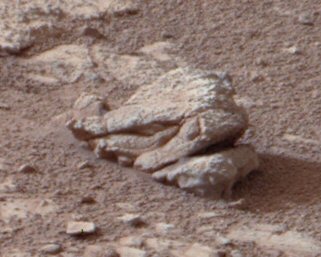
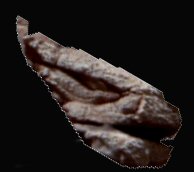
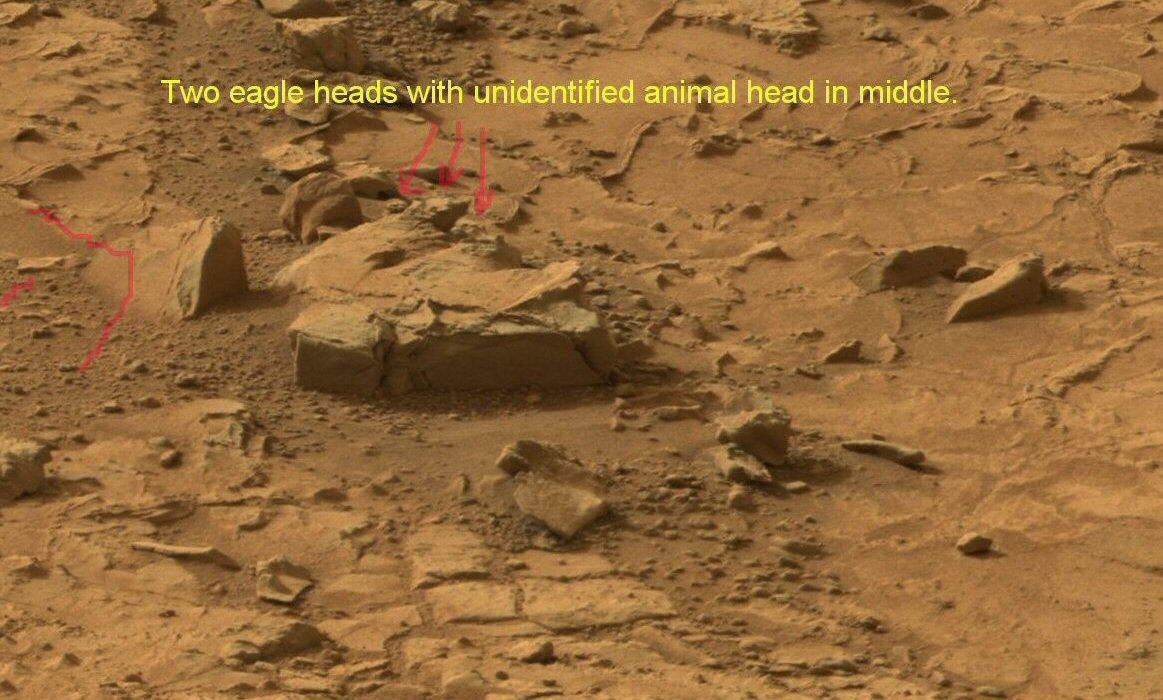
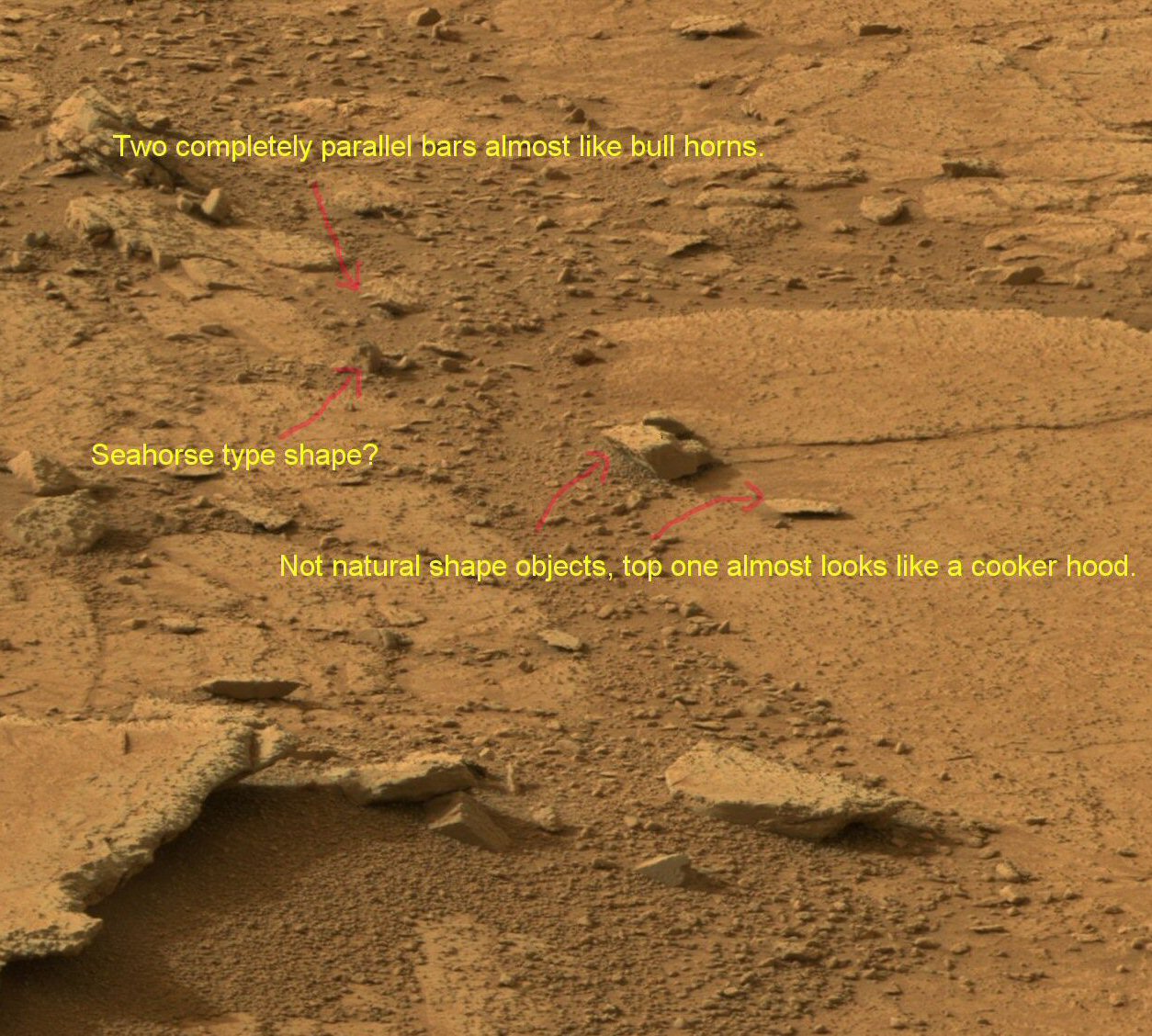
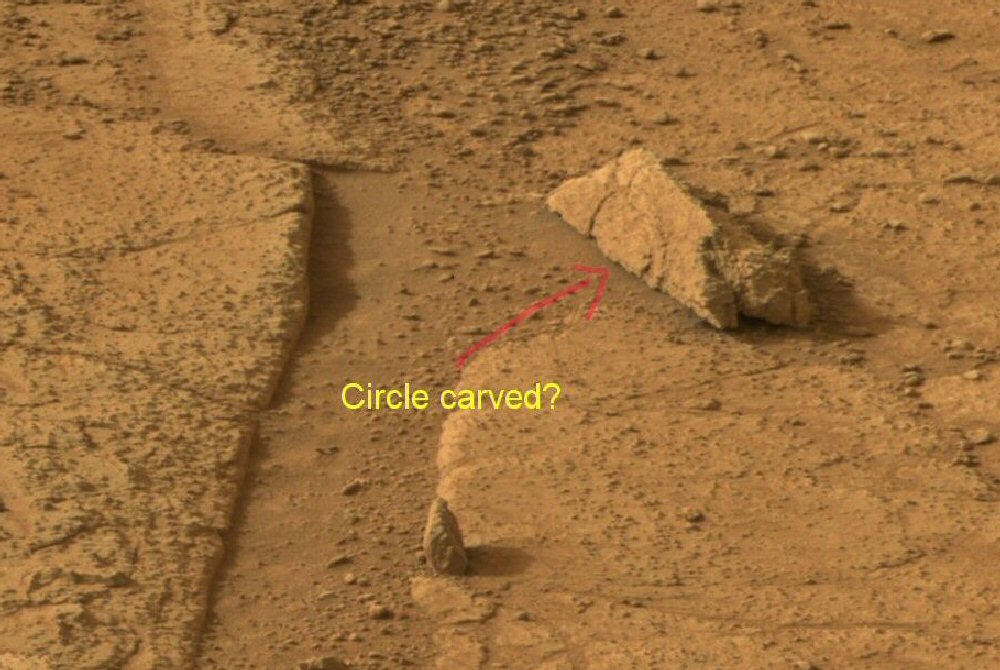
Now, I know a lot of the skeptics will say it's just rocks etc. but I have looked and relooked at these images, I am convinced that this debris, washed here by the now evaporated river, which btw, is where you would most likely find all the remnants of what once was on the planet, is the leftovers of an ancient civilization, there is no doubt in my mind, however, it is not the point of this thread.
A point raised in the above mentioned thread was of size ratio:
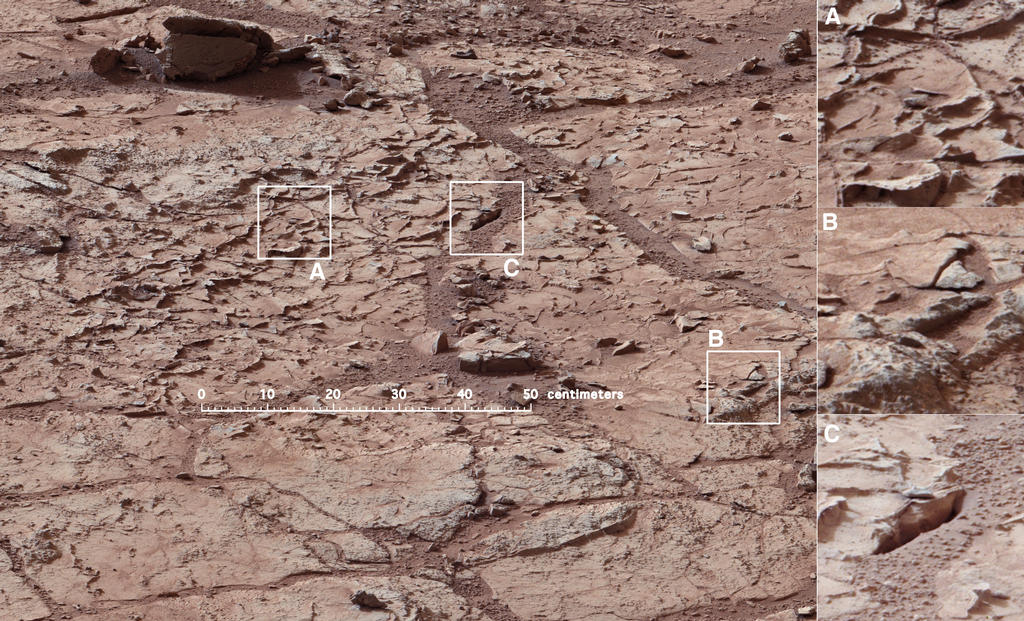
And another strange shaped anomaly from that image:
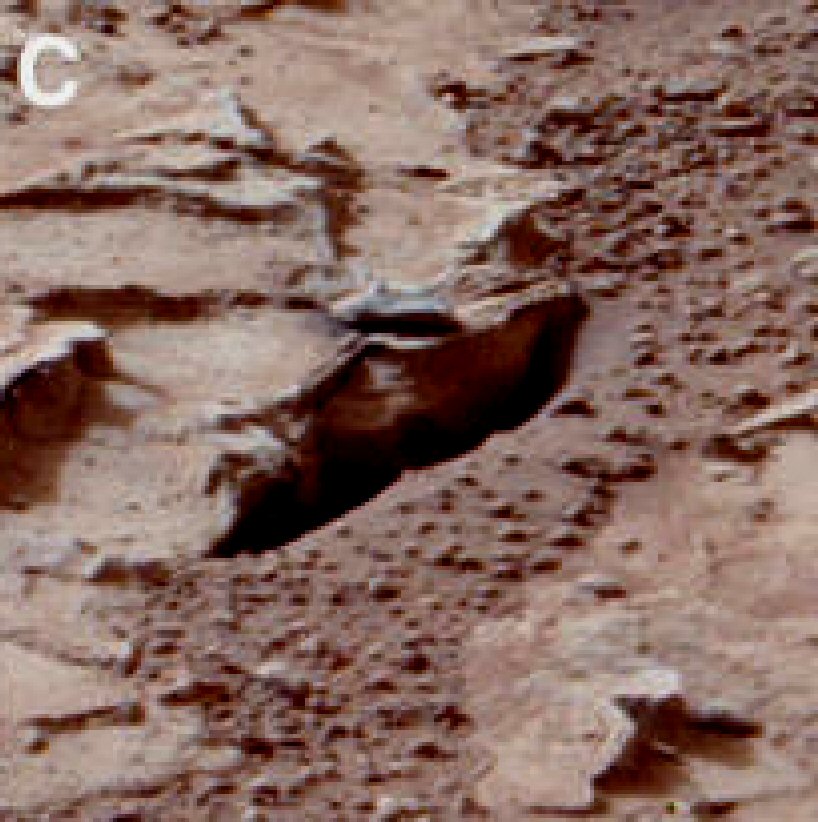
According to the scale bar, that anomaly would be 7-8cm in size, with the rest of anomalies of similar scale. I'm left asking myself a question, is this genuinely the real size of the objects?
Whilst I admit, anything is possible in this subject, a mini civilization could have existed on Mars, I must admit, I find it unlikely. So another question, what if NASA was lying about the scale size ratio? What better way to cover up these anomalies than by saying "oh, they're only a few cm long, can't possibly be the leftovers of ancient carvings".
Would NASA lie about the size of the objects on Mars' surface in order to deceive those of us who can see what this stuff is?
www.abovetopsecret.com...
Just to explain, whilst trawling through the image posted in that thread, I also noticed a ton of anomalies:





Now, I know a lot of the skeptics will say it's just rocks etc. but I have looked and relooked at these images, I am convinced that this debris, washed here by the now evaporated river, which btw, is where you would most likely find all the remnants of what once was on the planet, is the leftovers of an ancient civilization, there is no doubt in my mind, however, it is not the point of this thread.
A point raised in the above mentioned thread was of size ratio:

And another strange shaped anomaly from that image:

According to the scale bar, that anomaly would be 7-8cm in size, with the rest of anomalies of similar scale. I'm left asking myself a question, is this genuinely the real size of the objects?
Whilst I admit, anything is possible in this subject, a mini civilization could have existed on Mars, I must admit, I find it unlikely. So another question, what if NASA was lying about the scale size ratio? What better way to cover up these anomalies than by saying "oh, they're only a few cm long, can't possibly be the leftovers of ancient carvings".
Would NASA lie about the size of the objects on Mars' surface in order to deceive those of us who can see what this stuff is?
edit on
27-1-2013 by Zcustosmorum because: (no reason given)
You can use the rover itself to judge the relative size of rocks and other things. Here's an image from Curiosity's hazcam, located at the bottom
front of the rover: mars.jpl.nasa.gov...
The "wrinkled" area and many rocks nearby fit between Curiosity's wheels!
The instrument turret at the end of the robotic arm is another good comparison: mars.jpl.nasa.gov...
Here's a gif animation of Curiosity's movements and activities over the last few Sols, as seen by the navcam. Keep in mind that Curiosity is car-sized. Your area of interest is shown from Sol 165: www.marspages.eu...
The "wrinkled" area and many rocks nearby fit between Curiosity's wheels!
The instrument turret at the end of the robotic arm is another good comparison: mars.jpl.nasa.gov...
Here's a gif animation of Curiosity's movements and activities over the last few Sols, as seen by the navcam. Keep in mind that Curiosity is car-sized. Your area of interest is shown from Sol 165: www.marspages.eu...
edit on 27-1-2013 by wildespace
because: (no reason given)
Originally posted by wildespace
You can use the rover itself to judge the relative size of rocks and other things. Here's an image from Curiosity's hazcam, located at the bottom front of the rover: mars.jpl.nasa.gov...
The "wrinkled" area and many rocks nearby fit between Curiosity's wheels!
The instrument turret at the end of the robotic arm is another good comparison: mars.jpl.nasa.gov...
Here's a gif animation of Curiosity's movements and activities over the last few Sols, as seen by the navcam. Keep in mind that Curiosity is car-sized. Your area of interest is shown from Sol 165: www.marspages.eu...edit on 27-1-2013 by wildespace because: (no reason given)
But in the images posted in title, we really have no idea how close or far away Curiosity was to this stuff (particularly the stuff not in the foreground), and of course, the images you posted from the same area may not be from the same location.
edit on 27-1-2013 by Zcustosmorum
because: (no reason given)
reply to post by Zcustosmorum
The images I linked to apply to this location:
The rock at the top of that image is this rock at the bottom of this image, next to Curiosity's wheel: mars.jpl.nasa.gov...
A good way to explore this area is in this interactive panorama I made: photosynth.net...
I'm curious where the other images in your OP come from, perhaps I can try to locate those rocks.
The images I linked to apply to this location:
The rock at the top of that image is this rock at the bottom of this image, next to Curiosity's wheel: mars.jpl.nasa.gov...
A good way to explore this area is in this interactive panorama I made: photosynth.net...
I'm curious where the other images in your OP come from, perhaps I can try to locate those rocks.
edit on 27-1-2013 by wildespace because: (no
reason given)
reply to post by Zcustosmorum
A number of these images involve stereopairs.
Because stereopairs require the two cameras to be a distance apart, and therefore provide co-ordinates the can be calculated from the point of convergence etc ... you could fairly accurately measure the size of objects in those photographs.
If NASA was lying about the size of the rocks, it would have to be in images not involving the stereopairs. It would probably be considerbly easier to just not photograph the suspect areas.
A number of these images involve stereopairs.
Because stereopairs require the two cameras to be a distance apart, and therefore provide co-ordinates the can be calculated from the point of convergence etc ... you could fairly accurately measure the size of objects in those photographs.
If NASA was lying about the size of the rocks, it would have to be in images not involving the stereopairs. It would probably be considerbly easier to just not photograph the suspect areas.
reply to post by wildespace
All the rest of the images apart from the one you posted, are from this image:
photojournal.jpl.nasa.gov...
Interesting point, so any idea how far away the stuff at the top of the image link above is? Or to put it another way, what might be the distance from the stuff in foreground to the stuff in the background?
All the rest of the images apart from the one you posted, are from this image:
photojournal.jpl.nasa.gov...
Originally posted by Pinke
reply to post by Zcustosmorum
A number of these images involve stereopairs.
Because stereopairs require the two cameras to be a distance apart, and therefore provide co-ordinates the can be calculated from the point of convergence etc ... you could fairly accurately measure the size of objects in those photographs.
If NASA was lying about the size of the rocks, it would have to be in images not involving the stereopairs. It would probably be considerbly easier to just not photograph the suspect areas.
Interesting point, so any idea how far away the stuff at the top of the image link above is? Or to put it another way, what might be the distance from the stuff in foreground to the stuff in the background?
edit on 27-1-2013 by Zcustosmorum because: (no reason given)
reply to post by Zcustosmorum
I have an idea of the distances perhaps, but to mathematically prove it would require time and effort to explain I don't have today.
Would have to go back to the raw images and work from there. There are a number of stereoscopic cameras on the rover that can help also - the haz and navcams. NASA have also released some maps of the area. If you're confident enough about your theory, I'd probably recommend looking for areas where NASA's maths doesn't add up in multiple images.
Photogrammetry is nothing new though, and hiding something like that it plain sight would be questionable.
I have an idea of the distances perhaps, but to mathematically prove it would require time and effort to explain I don't have today.
Would have to go back to the raw images and work from there. There are a number of stereoscopic cameras on the rover that can help also - the haz and navcams. NASA have also released some maps of the area. If you're confident enough about your theory, I'd probably recommend looking for areas where NASA's maths doesn't add up in multiple images.
Photogrammetry is nothing new though, and hiding something like that it plain sight would be questionable.
reply to post by Zcustosmorum
Nature can do strange things for example
Rocks with Faces
Some people say nature cant do straight lines well
You are basically seeing what you hope and want to see i mean look at all the faces in this link!
Faces
Nature can do strange things for example
Rocks with Faces
Some people say nature cant do straight lines well
You are basically seeing what you hope and want to see i mean look at all the faces in this link!
Faces
Originally posted by Zcustosmorum
reply to post by wildespace
All the rest of the images apart from the one you posted, are from this image:
photojournal.jpl.nasa.gov...
Thanks, now I can see that all those images are from the same area as the pinkish image with the insets and the scale. Here's that image with your "two eagle heads" image shown.
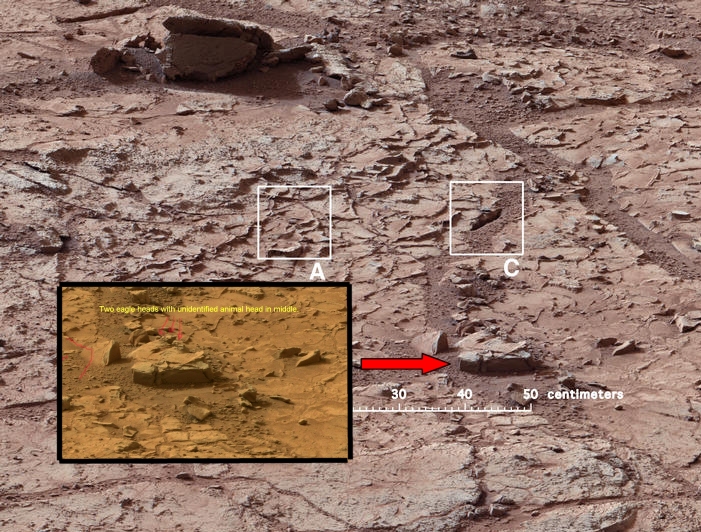
Here's the pinkish image imbedded into the large NASA image:

The rover is directly over that area, and the "wrinkled" area fits in-between its wheels!
There's also the matter of the angle of view. The images you posted are from a relatively high angle of view, meaning that the rover is nearby and has to look down a bit. If those rocks were very large, then for the same angle of view the images would have to be taken from a helicopter, or from a high position, or when looking at a mountain slope (but we know that that area is flat).
Originally posted by Pinke
reply to post by Zcustosmorum
A number of these images involve stereopairs.
Because stereopairs require the two cameras to be a distance apart, and therefore provide co-ordinates the can be calculated from the point of convergence etc ... you could fairly accurately measure the size of objects in those photographs.
If NASA was lying about the size of the rocks, it would have to be in images not involving the stereopairs. It would probably be considerbly easier to just not photograph the suspect areas.
You just gave me an idea: stereopairs can be viewed in quick succesion as an animated gif, giving an impression of the scale and distances involved. Here's a gif from the two Navcams on the rover. The rock in-between the rover's wheels is the "two eagle heads" rock.
makeagif.com...
Originally posted by Pinke
Photogrammetry is nothing new though, and hiding something like that it plain sight would be questionable.
That's right, and luckily for us someone made a program to do just that.
It was originally made for the MER missions, but the maker (Clark Andersen) added support for Phoenix and Curiosity (only navigation cameras, unfortunately) photos.
The program is AlgorimancerPG, and according to it, the size of the rock in the image below is a little less than 50 cm.
(click for full size)
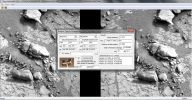
reply to post by ArMaP
I love you Armap!
Have I told you this recently? Person with photogrammetry app in their pocket, so dreamy. Haha
I love you Armap!
Have I told you this recently? Person with photogrammetry app in their pocket, so dreamy. Haha
Originally posted by Pinke
reply to post by ArMaP
I love you Armap!
Have I told you this recently? Person with photogrammetry app in their pocket, so dreamy. Haha
Hi ATSers,
Great thread!
First of all I believe there're anomalies in Mars. And life..
But one must consider that these types of terrains create infinite natural shapes and it's very easy to bump into familiar forms. Yes, Pareidolia..indeed.
The scale itself is playing tricks along with shades, angles and pixelation.
In short, these pictures are too rich in visual information.
Good points here, but for me it's all soil and rocks. Unfortunately
My 2 cents
Great thread!
First of all I believe there're anomalies in Mars. And life..
But one must consider that these types of terrains create infinite natural shapes and it's very easy to bump into familiar forms. Yes, Pareidolia..indeed.
The scale itself is playing tricks along with shades, angles and pixelation.
In short, these pictures are too rich in visual information.
Good points here, but for me it's all soil and rocks. Unfortunately
My 2 cents
reply to post by LordAdef
Thx for opinion mate, I would agree with you but I'm seeing way too many strange shapes not just in the OP image but other Mars images also, it just isn't natural formations imo. There's also a very wide variety of these un-natural shaped rocks and I find it strange as to why that would be, unless it had been molded/carved sometime in its past.
I recently heard that it takes up to 20 minutes for a image to be taken on the red planet before making its way online to the JPL website, hence why these objects are still in the images.
Additionally, the location of Curiosity is exactly where you would find remnants of what was once on the planet, it's one thing to claim that an ancient river may have eroded some of the rocks, which is fair enough, but it doesn't explain why some of the "rocks" are a different colour, that indicates, a different material.
Thx for opinion mate, I would agree with you but I'm seeing way too many strange shapes not just in the OP image but other Mars images also, it just isn't natural formations imo. There's also a very wide variety of these un-natural shaped rocks and I find it strange as to why that would be, unless it had been molded/carved sometime in its past.
I recently heard that it takes up to 20 minutes for a image to be taken on the red planet before making its way online to the JPL website, hence why these objects are still in the images.
Additionally, the location of Curiosity is exactly where you would find remnants of what was once on the planet, it's one thing to claim that an ancient river may have eroded some of the rocks, which is fair enough, but it doesn't explain why some of the "rocks" are a different colour, that indicates, a different material.
edit on 30-1-2013 by Zcustosmorum because: (no reason given)
Originally posted by Zcustosmorum
There's also a very wide variety of these un-natural shaped rocks and I find it strange as to why that would be, unless it had been molded/carved sometime in its past.
They were probably moulded by water.
I recently heard that it takes up to 20 minutes for a image to be taken on the red planet before making its way online to the JPL website, hence why these objects are still in the images.
Meaning that if they had the time the objects would be replaced? If they wanted to change something in the images they wouldn't publish them in 20 minutes.
Additionally, the location of Curiosity is exactly where you would find remnants of what was once on the planet, it's one thing to claim that an ancient river may have eroded some of the rocks, which is fair enough, but it doesn't explain why some of the "rocks" are a different colour, that indicates, a different material.
I'm not a geologist (but I do like geology), but to me that area looks like it was subjected to two different events that were responsible for most of how it looks today. I think that we can see four different types of rock, but all look like sedimentary rock that breaks easily (we can see that the rocks break under Curiosity's weight) and they look like they were made with different materials, as would happen if a large lake turned into a small, salty lake (for example).
reply to post by ArMaP
Really all just conjecture though isn't it?
I appreciate that not enough is known just yet about the conditions on Mars but something is just wrong, can't quite put my finger on it but it just is
Really all just conjecture though isn't it?
I appreciate that not enough is known just yet about the conditions on Mars but something is just wrong, can't quite put my finger on it but it just is
Originally posted by Zcustosmorum
Really all just conjecture though isn't it?
It sure is.
The trouble with all this conjecture is that you can go on 'conjecturing' until the cows come home but what we see in the images is not explained by
NASA. For example the numerous mechanical-looking objects which litter the landscape and the 'things which move" between frames (and please dont
tell me it is camera angle, cos it isnt).
There is absolutely no reason why a physically small-sized civilisation should not be possible in any alien place since we cannot assume their biology is the same as ours or even carbon-based for that matter.
If life exists as non carbon-based then the liquid could be an alternative to water and the size of the physical and the appearance could be anything you can imagine and anything you cannot imagine as well.
There is absolutely no reason why a physically small-sized civilisation should not be possible in any alien place since we cannot assume their biology is the same as ours or even carbon-based for that matter.
If life exists as non carbon-based then the liquid could be an alternative to water and the size of the physical and the appearance could be anything you can imagine and anything you cannot imagine as well.
Originally posted by qmantoo
The trouble with all this conjecture is that you can go on 'conjecturing' until the cows come home but what we see in the images is not explained by NASA. For example the numerous mechanical-looking objects which litter the landscape and the 'things which move" between frames (and please dont tell me it is camera angle, cos it isnt).
Well prove its not the camera angle then YOU must be able to
new topics
-
Paradox of Progress
Ancient & Lost Civilizations: 7 hours ago -
Joe Biden gives the USA's Highest Civilian Honor Award to Hillary Clinton and George Soros.
US Political Madness: 9 hours ago -
Winter Storm
Fragile Earth: 10 hours ago -
Biden Face Planted Somewhere
Politicians & People: 11 hours ago
top topics
-
Joe Biden gives the USA's Highest Civilian Honor Award to Hillary Clinton and George Soros.
US Political Madness: 9 hours ago, 13 flags -
What Is 'Quad Demic'? Mask Mandate Returns In These US States
Diseases and Pandemics: 16 hours ago, 11 flags -
The Future of fashion .
Social Issues and Civil Unrest: 16 hours ago, 8 flags -
Winter Storm
Fragile Earth: 10 hours ago, 7 flags -
Bin Cyber Junk…
Short Stories: 17 hours ago, 6 flags -
A great artist and storyteller, for kids of all ages
General Entertainment: 12 hours ago, 5 flags -
Biden Face Planted Somewhere
Politicians & People: 11 hours ago, 5 flags -
Paradox of Progress
Ancient & Lost Civilizations: 7 hours ago, 5 flags
active topics
-
What Is 'Quad Demic'? Mask Mandate Returns In These US States
Diseases and Pandemics • 30 • : butcherguy -
The Future of fashion .
Social Issues and Civil Unrest • 19 • : Cloudbuster1 -
Winter Storm
Fragile Earth • 19 • : RazorV66 -
Post A Funny (T&C Friendly) Pic Part IV: The LOL awakens!
General Chit Chat • 7988 • : KrustyKrab -
Paradox of Progress
Ancient & Lost Civilizations • 3 • : BingoMcGoof -
Here we again... CHINA having mass outbreak of something
Diseases and Pandemics • 24 • : NoCorruptionAllowed -
A great artist and storyteller, for kids of all ages
General Entertainment • 1 • : angelchemuel -
-@TH3WH17ERABB17- -Q- ---TIME TO SHOW THE WORLD--- -Part- --44--
Dissecting Disinformation • 3931 • : RelSciHistItSufi -
Joe Biden gives the USA's Highest Civilian Honor Award to Hillary Clinton and George Soros.
US Political Madness • 29 • : caterpillage -
NJ Drones tied to Tesla explosion at Trump Las vegas
General Conspiracies • 45 • : glen200376
